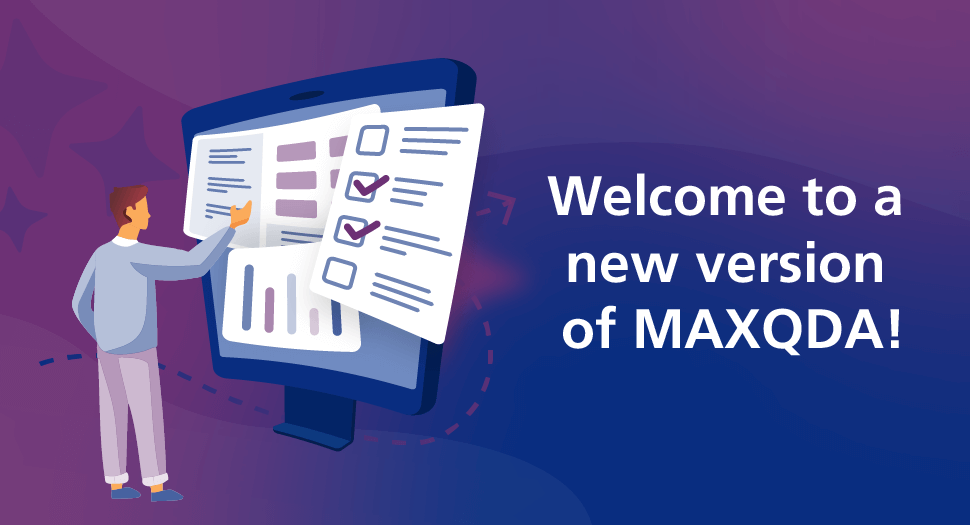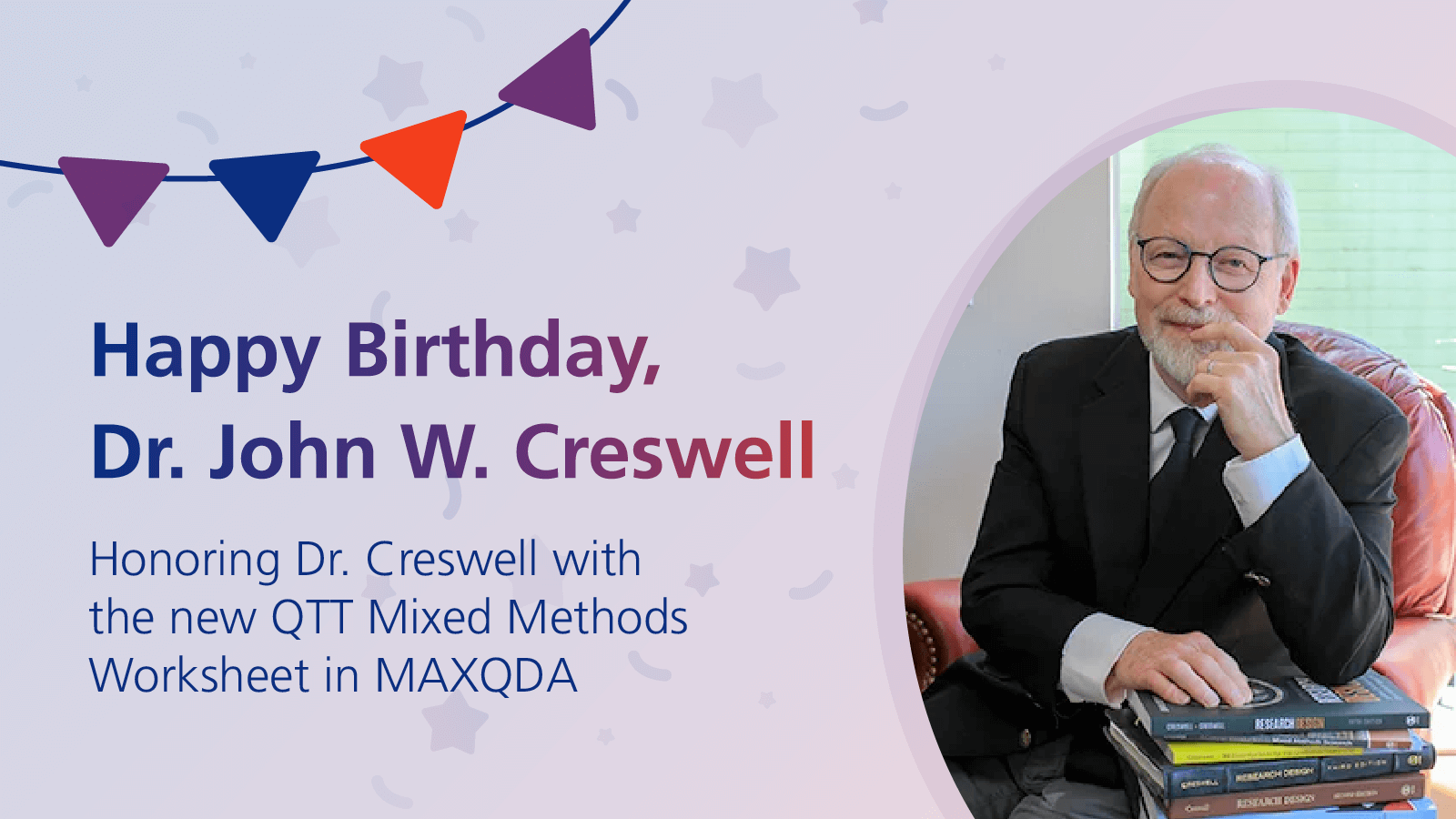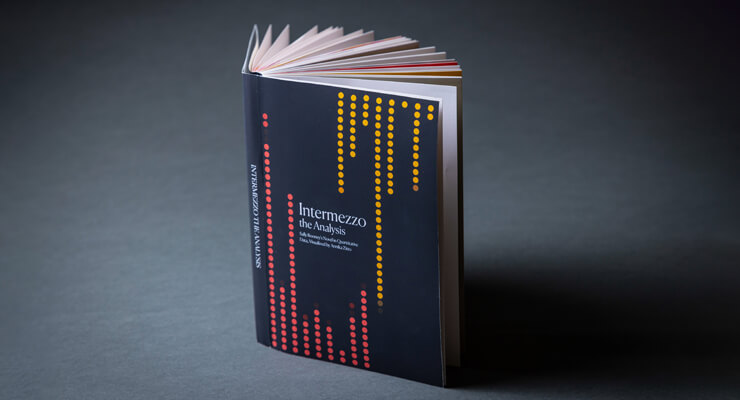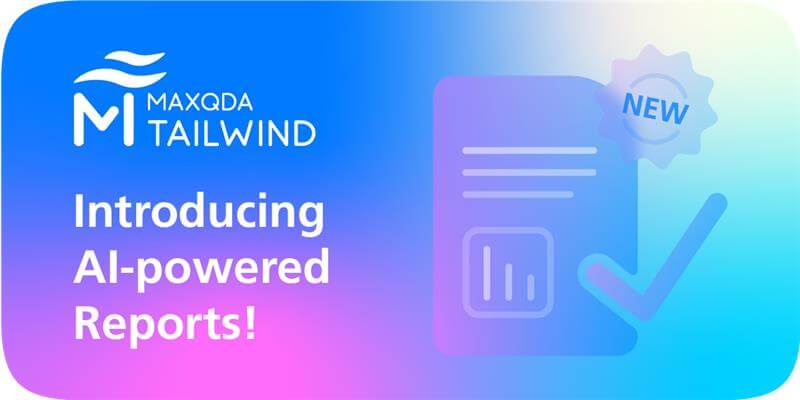Insights from Love Songs: Meet MAXQDA’s Word Cloud!
The feeling of being on cloud nine or floating on air is described as: “Being in love; ecstatic, in high spirits, very happy.”¹ That’s exactly how I feel when using the word cloud, one of the many visual tools in MAXQDA. It’s my favorite function, and there are many reasons why.
What is MAXQDA’s Word Cloud for?
The Word Cloud is one of the most frequently used visual tools in MAXQDA, likely due to its practicality and aesthetics. The Word Cloud counts the frequency of words in the datasets and represents them accordingly. The words that appear most frequently in one or more documents are displayed largest (and boldest), while less frequently used words are displayed smaller and thinner. With just a few clicks (which I will explain in more detail shortly), the use of the most relevant terms in a document is visualized not only clearly and concisely, but also aesthetically pleasing.
This is helpful for gaining an initial overview of the text and is very beneficial for the analysis process: depending on the research question, Word Clouds can be used to visualize results, quickly identify thematic areas, create an overview of a document, filter by part of speech, and make comparisons (e.g., temporal or cultural). Especially when it comes to recognizing systematic patterns and trends in large amounts of text, the Word Cloud is an ideal basis and can support further analysis processes. Here, it is the combination of quantitative frequency and qualitative analysis that generates valuable insights. Thus, the Word Cloud is both a relevant methodological tool and can shine through its disciplinary diversity. Because Word Clouds are not only suitable for discourse or content analysis, but can also be used, for example, for market research or ethnographies.
Which terms do study participants most frequently use to describe a particular phenomenon? – Find the answer in the Word Cloud. How is this phenomenon described in comparison to participants from another culture (cross-cultural comparison)? – Look at the Word Cloud. Are there differences in the use of terms in relation to their temporality (e.g., before 2000 and after 2000)? – Word Cloud. Depending on the context and research question, this function is therefore extremely practical and looks good too!
Instructions: How to create a Word Cloud
It is therefore worthwhile to take a closer look at the function of the Word Cloud. The following is a guide to creating a wonderful Word Cloud. And since, as I said, I’m on cloud nine with this process anyway, what could be better for a visual representation than the lyrics of ten well-known love songs from 1970 to 2019?
My research question for this mini-example project is: To what extent do the lyrics of popular love songs that 1) were released before the year 2000 differ from those that 2) were released after the year 2000? To this end, I randomly selected five love songs released between 1970 and 1999 from the list of the 50 greatest love songs of all time (Top 50 Love Songs of All Time (Updated)) and compiled the lyrics in a document. In the same way, I selected five songs released between 2000 and 2019.
I then imported both documents into my new MAXQDA project (which is, of course, called “Love”).
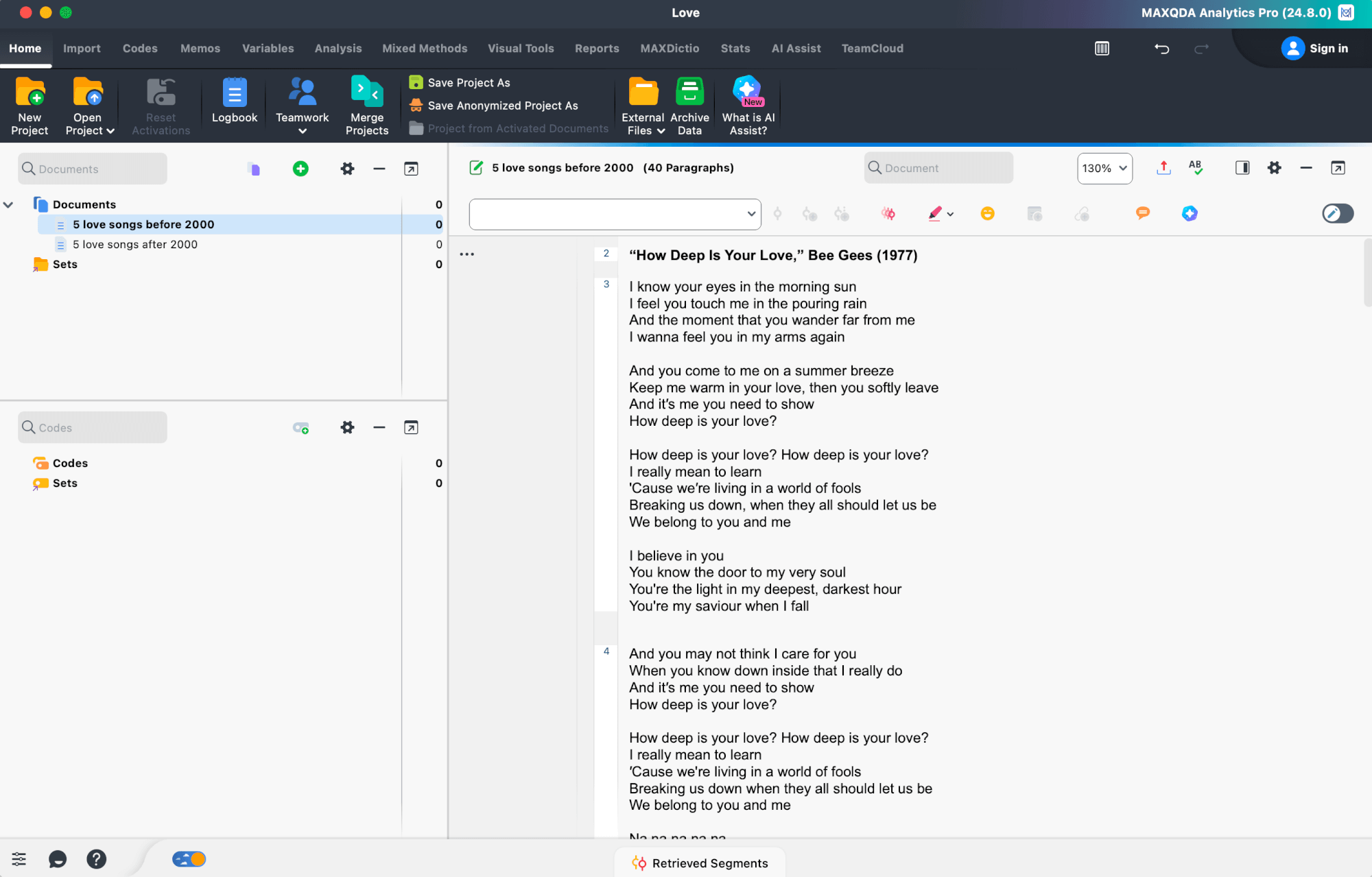
Now it couldn’t be simpler: I right-click on the document and select “Word Cloud”:
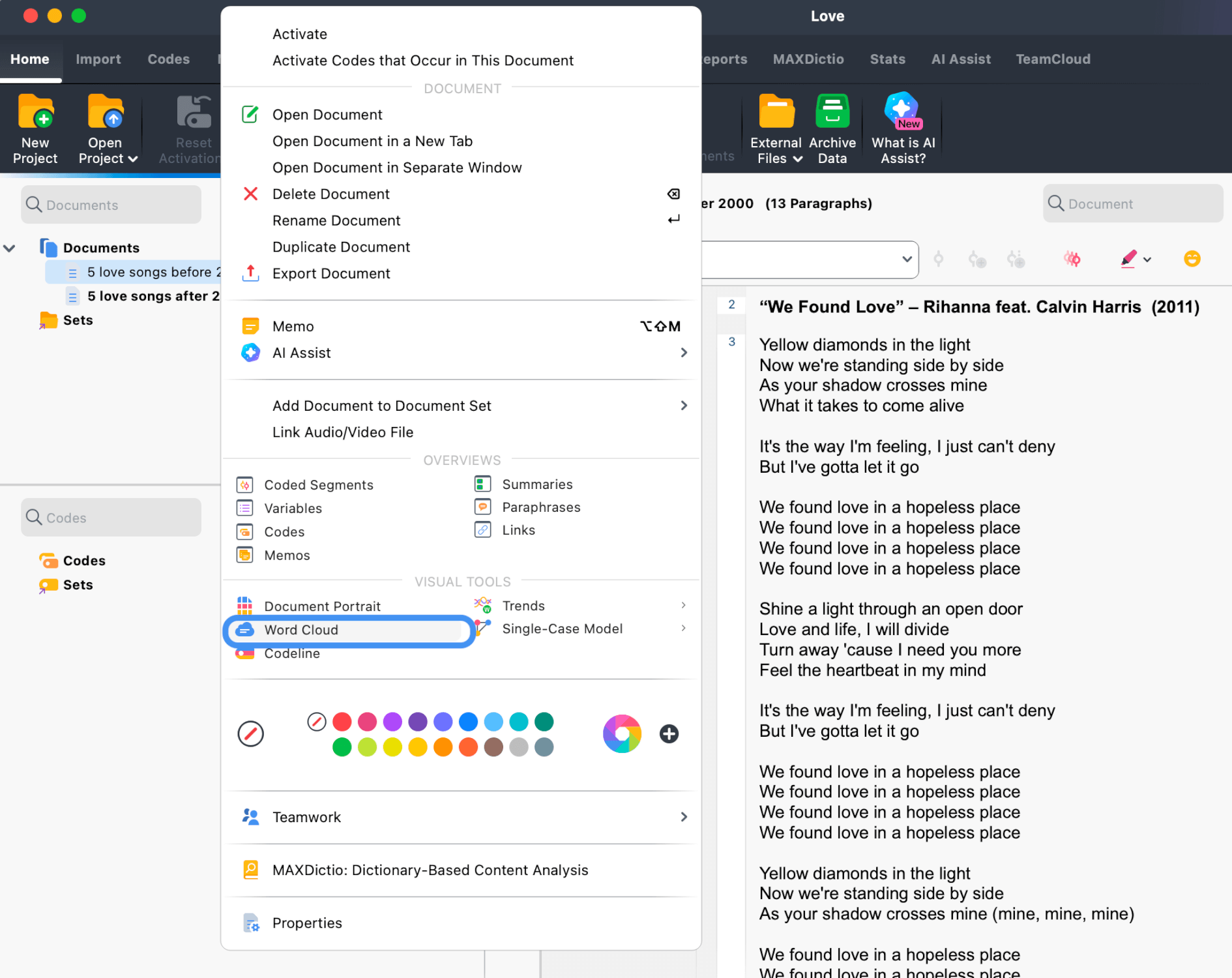
After a few milliseconds, the most frequent words in the document are displayed visually. For songs from before 2000, the Word Cloud looks like this:
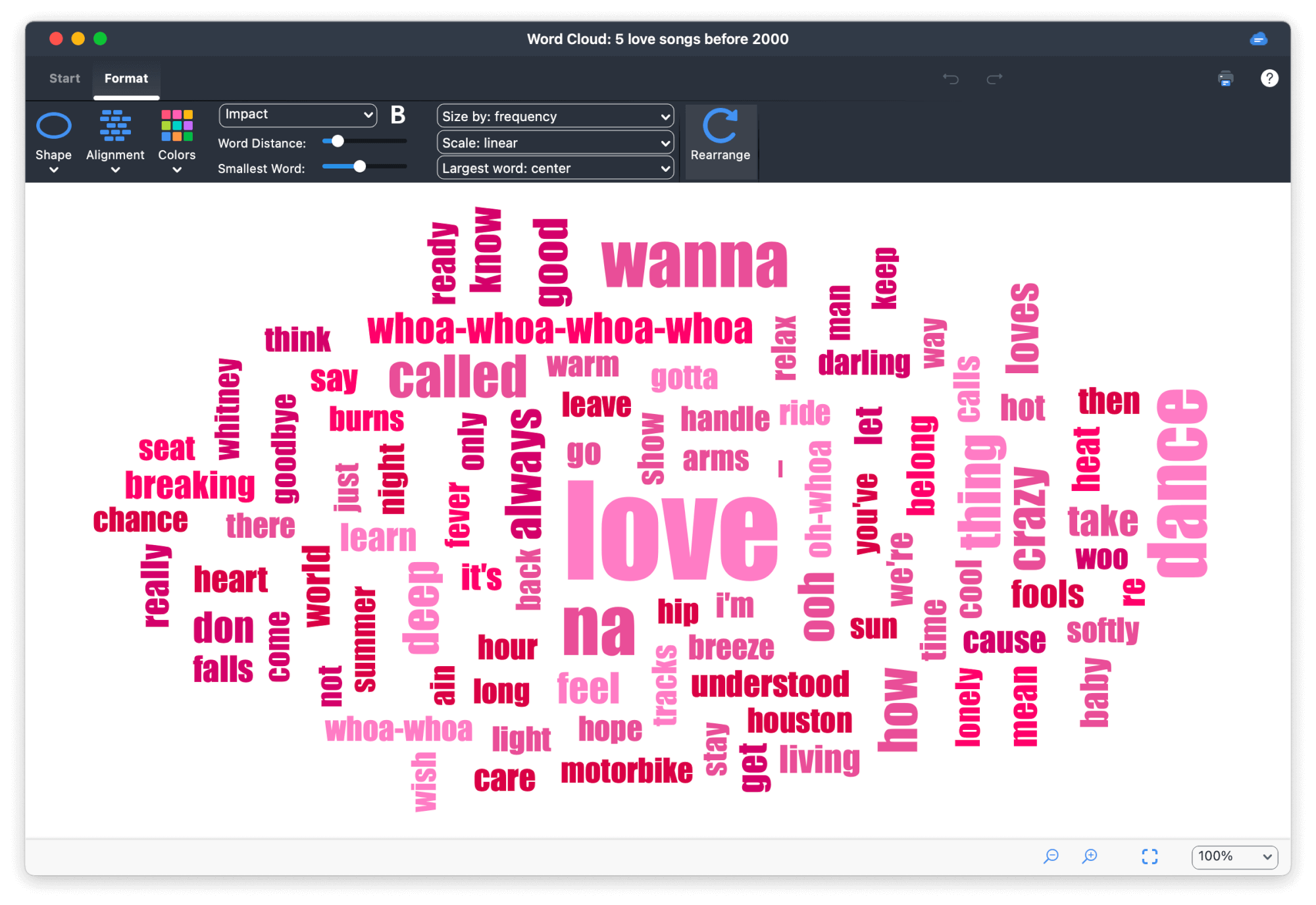
For love songs released later, the Word Cloud is as follows:
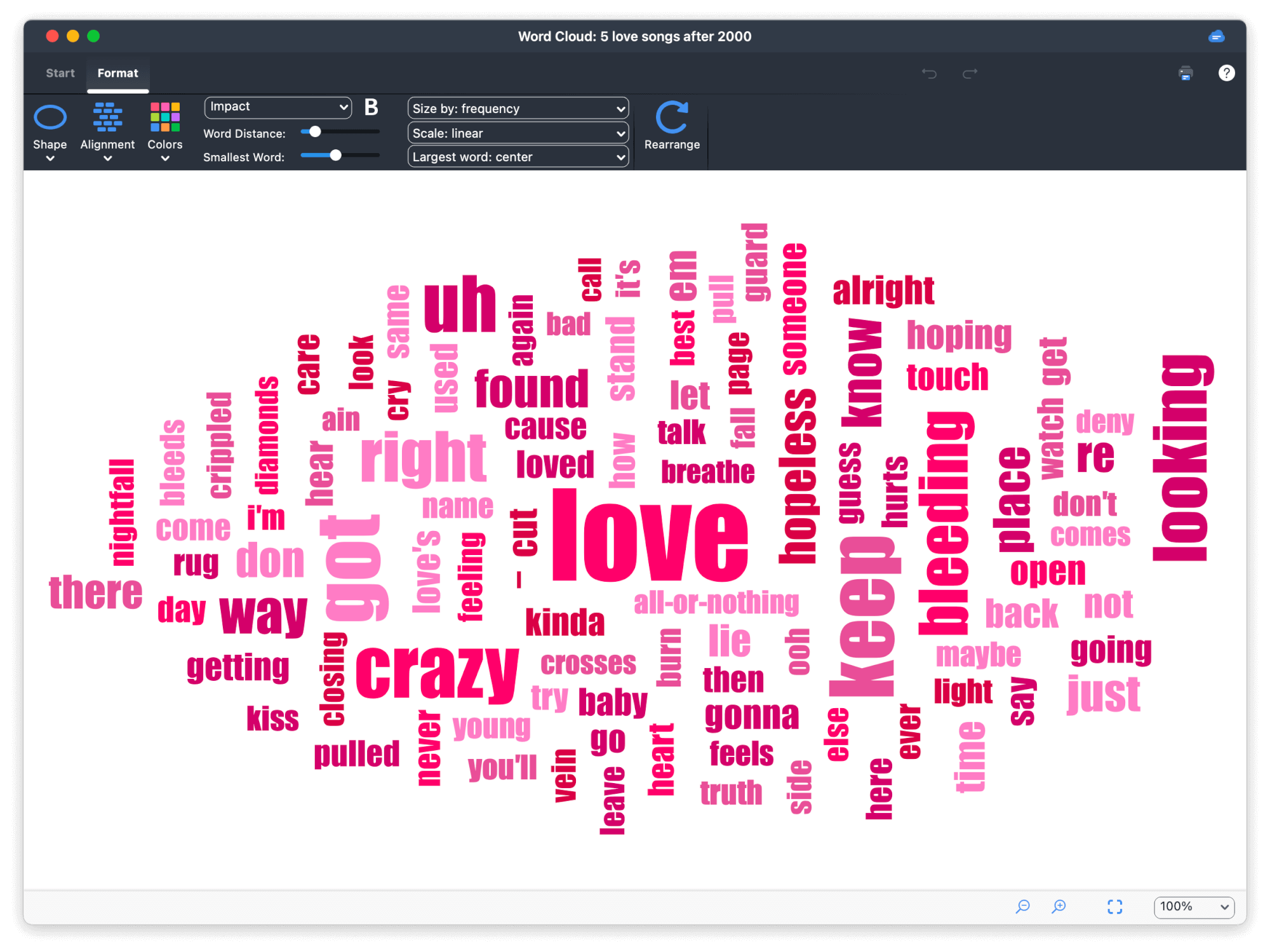
Even at first glance, some small differences are noticeable. But the best part is yet to come: customizing the Word Cloud to analysis parameters, interests, and aesthetic preferences. Not only can words that shouldn’t be counted (like years) be pushed into the stopword list with a right-click and thus disappear inconspicuously from the Word Cloud:
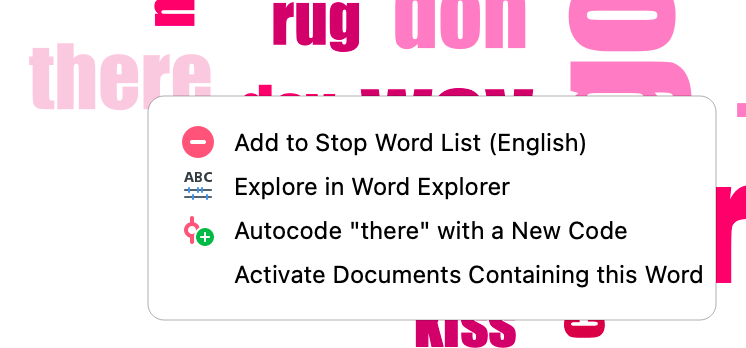
Different parts of speech can also be used for the analysis – What about verbs, adjectives, and adverbs in the lyrics of love songs? What do they reveal about the concepts of love before and after the year 2000, as expressed in love songs?
Via “Start” > “Parts of Speech: All”, I can click on the word group I want to examine more closely. Let’s compare adjectives mentioned in love songs before 2000 vs. after 2000:
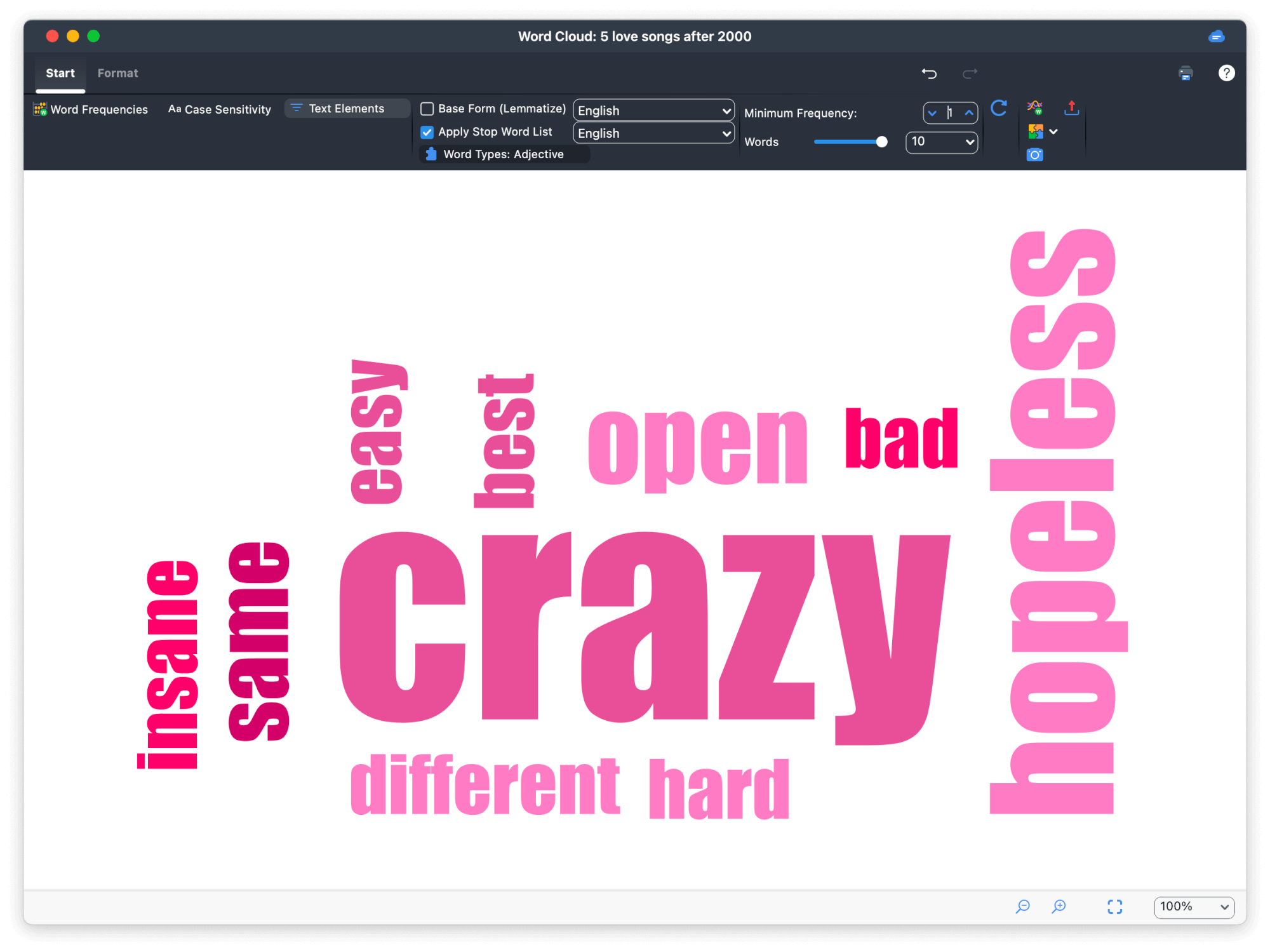
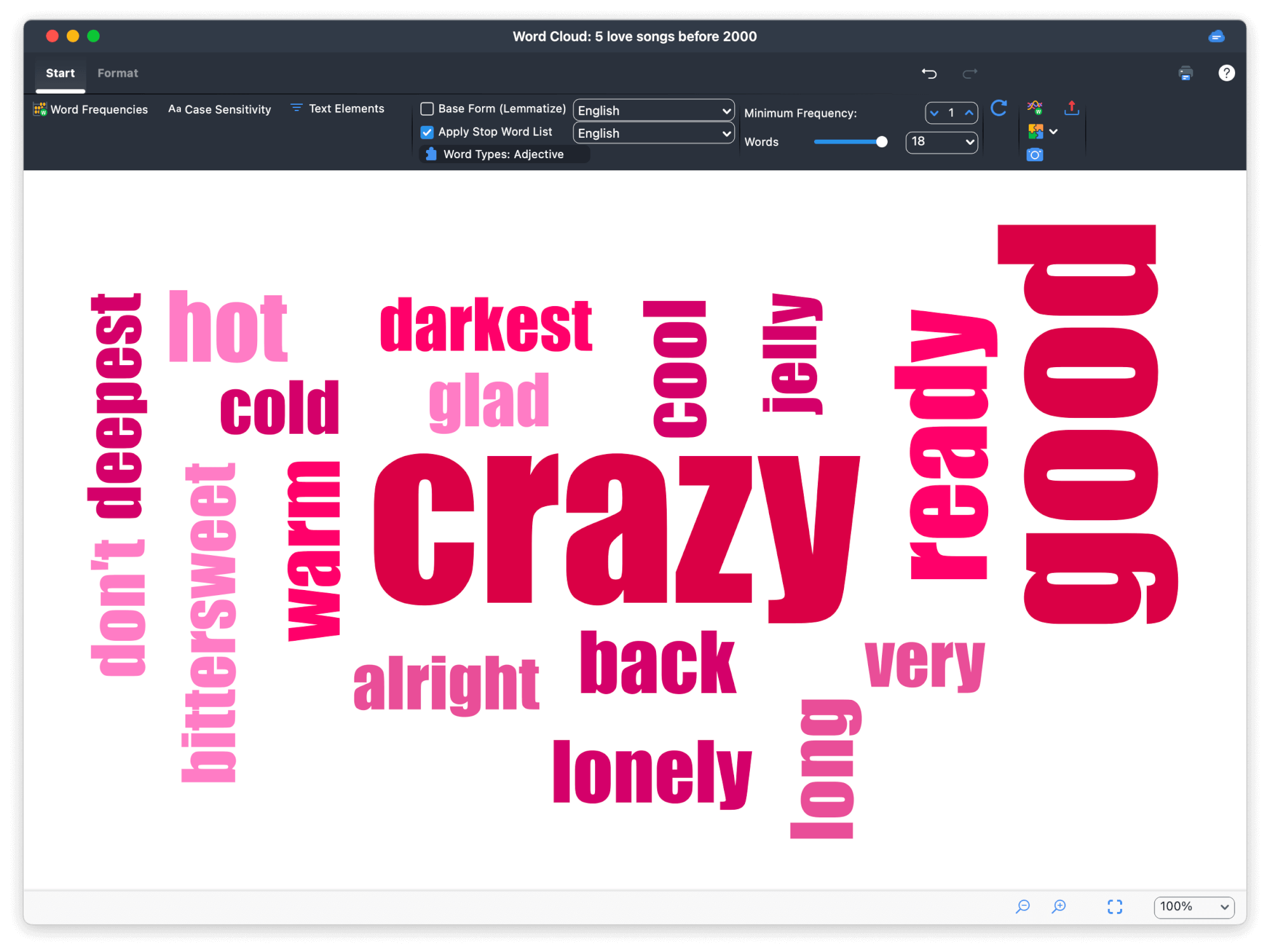
Okay, love before and after 2000 remains apparently simply “crazy”, but other adjectives that frequently occur in the selected love songs from the 1970s to 1990s are “good”, “ready”, and “warm/hot”. Love after 2000 remains “crazy”, but also “hopeless”, “bad”, “different”, and “hard”. What could this say about love songs changing over time?
Depending on the question and interest, the Word Clouds can now be created exclusively from verbs (or other parts of speech) – after 2000, the most frequent verbs are “get”, “keep”, and “look”, before 2000 they were “wanna”, “call”, and “love” – what does this mean?
By double-clicking on a word, an overview of all segments of the term occurring in the document is displayed, and the respective context of use can be read and understood precisely:
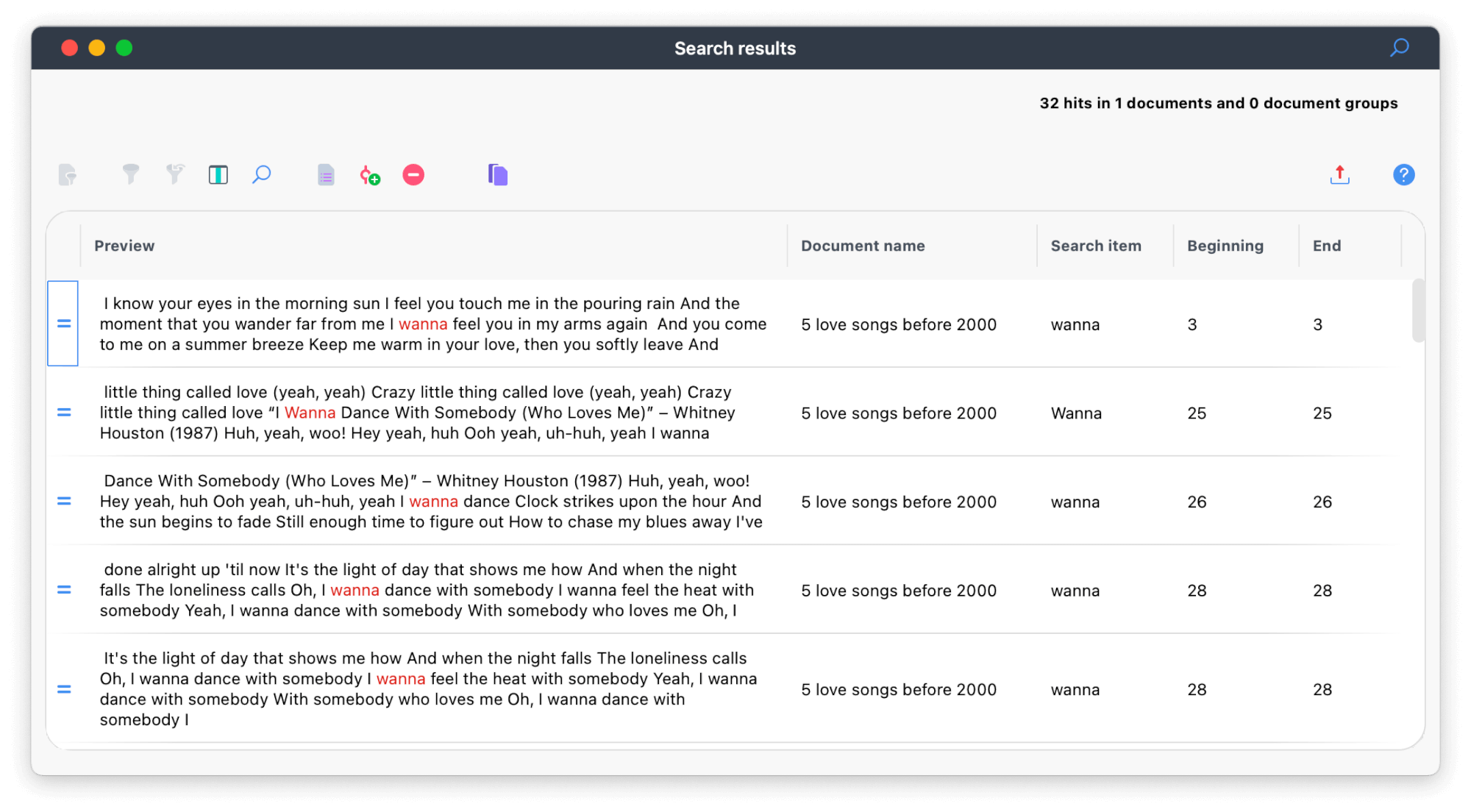
I wanna dance with the Word Cloud
So you can interact with the Word Cloud, it is not static, but alive (perhaps even floating?). If you right-click on a word, you can examine it further in the WordExplorer to discover the context of the word and word combinations. With “wanna”, it becomes clear that it is mainly about a shared “dance” (from which song before 2000 does this word combination come from?).
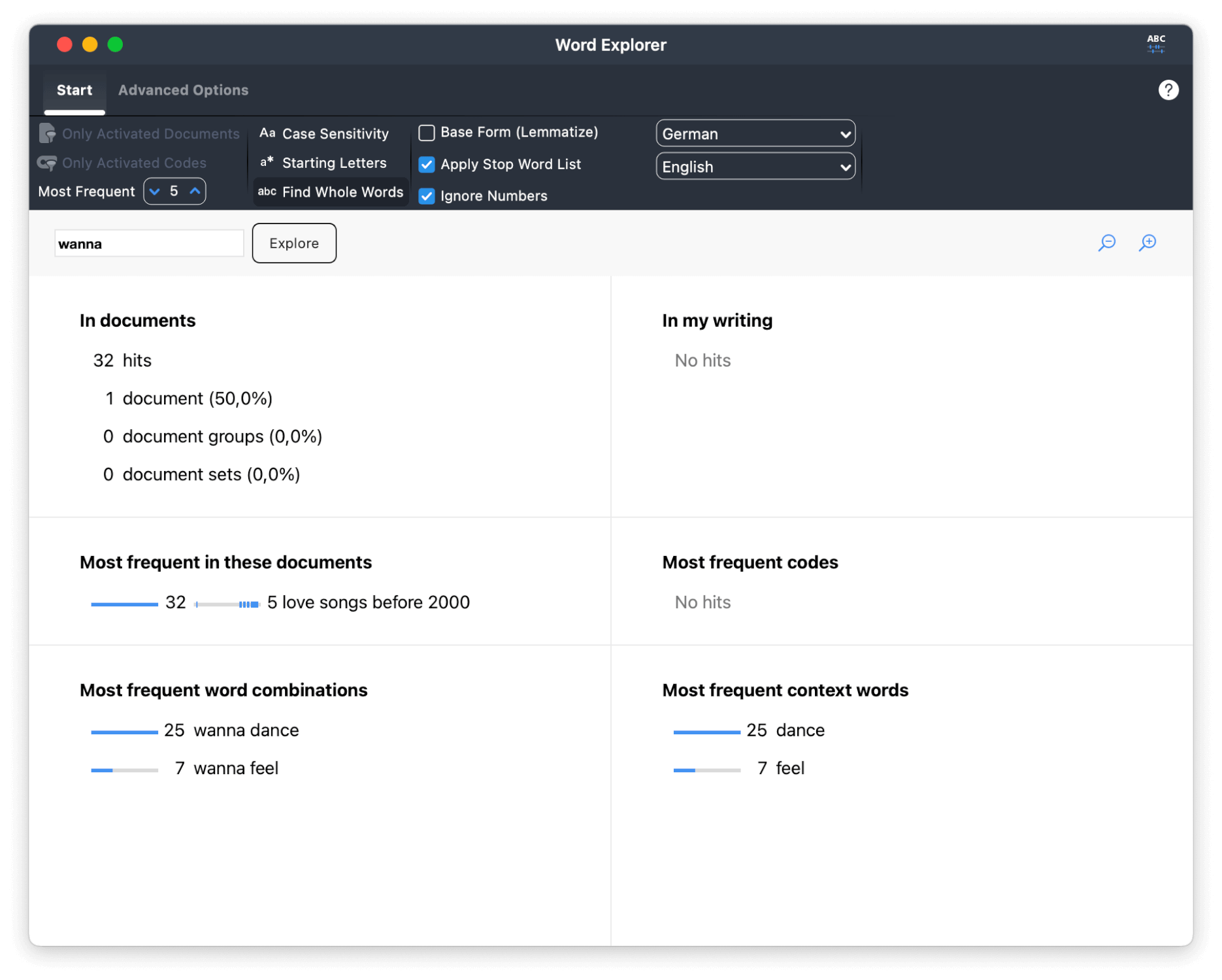
It is also possible to use a word from the Word Cloud as a code and automatically code the document with it. An image containing text, font, screenshot, graphics.
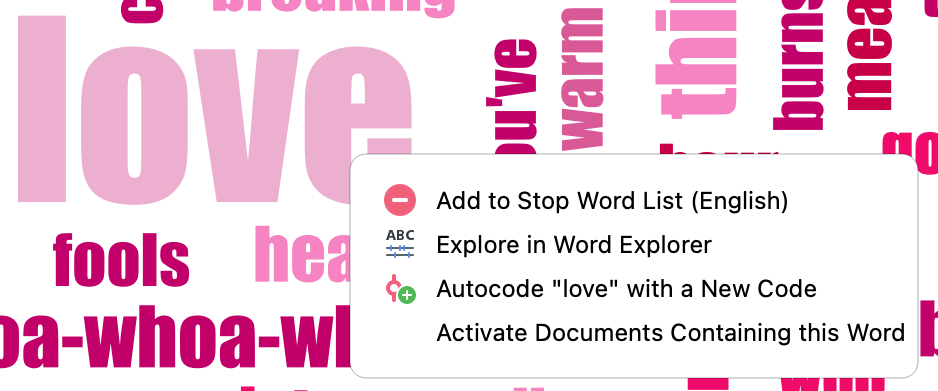
The code color, a code memo, and also the weighting of the code can be adjusted here:
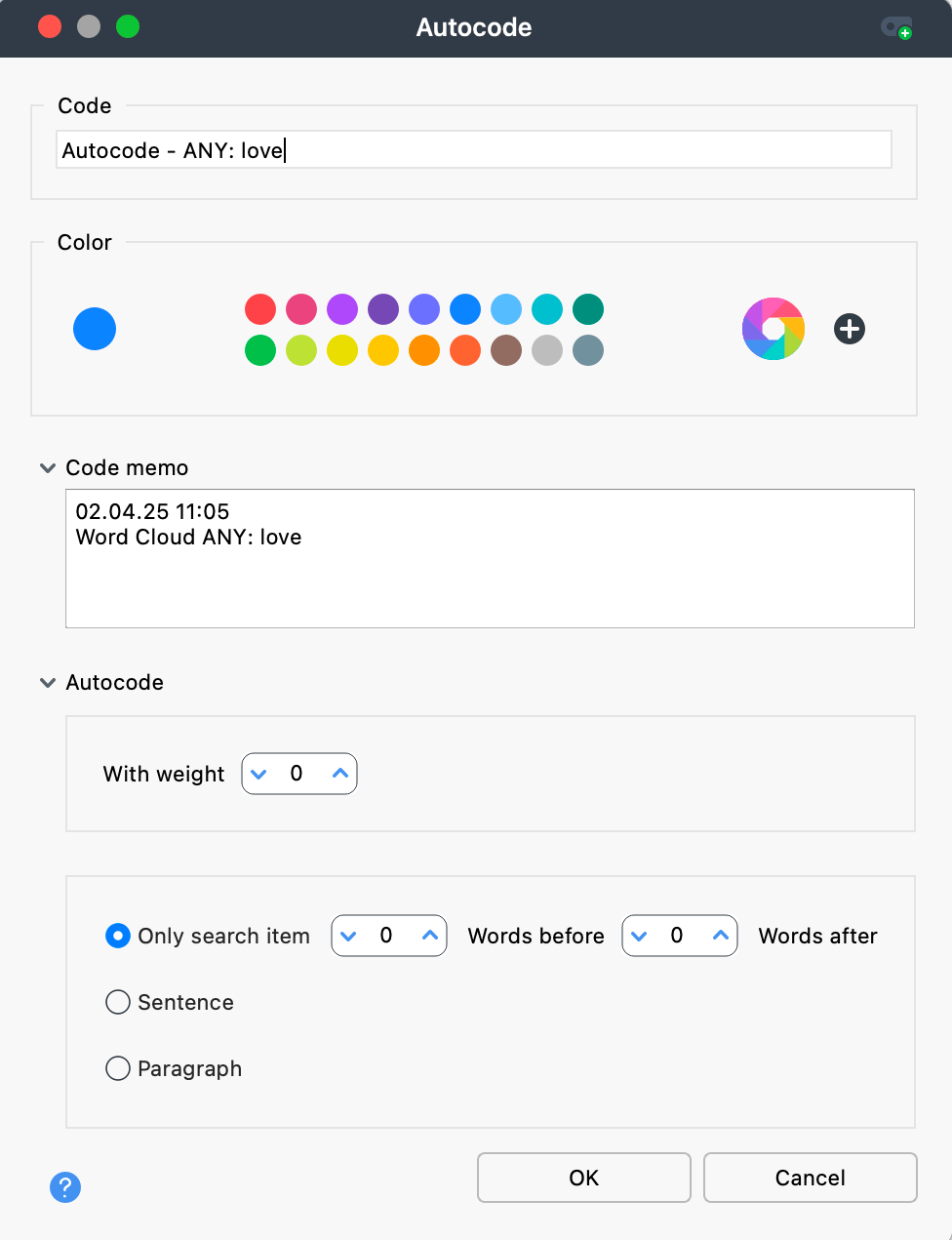
These follow-up functions form the basis for further analysis processes and reports.
Individual Customization Options
The design of the Word Cloud can vary: Under “Presentation,” the cloud can be customized in shape, orientation, color, and size – and there are truly no limits here. Appropriately for the topic, the color of the cloud in this example naturally needs to cover the pink-red-magenta palette, but I would also be happy with a combination of pastel tones. If you can’t decide, simply mix your own color palette and feel artistic:
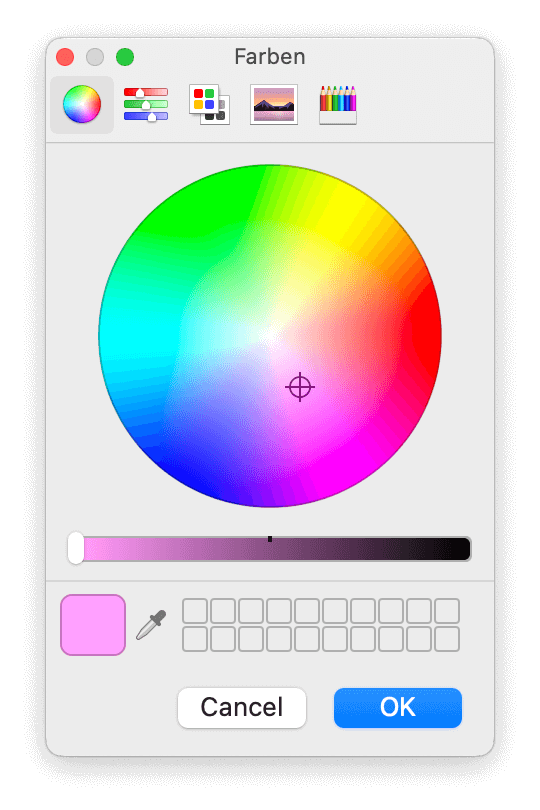
The shape can be round, square, or triangular, and even your own images can be selected as a template. The orientation is either horizontal or vertical – whatever your heart desires. But the highlight is designing the Word Cloud in the shape of your own text. After some experimentation (you naturally always have to see what is best suited for the analy-sis and question), the customized Word Cloud in this example now looks like this:
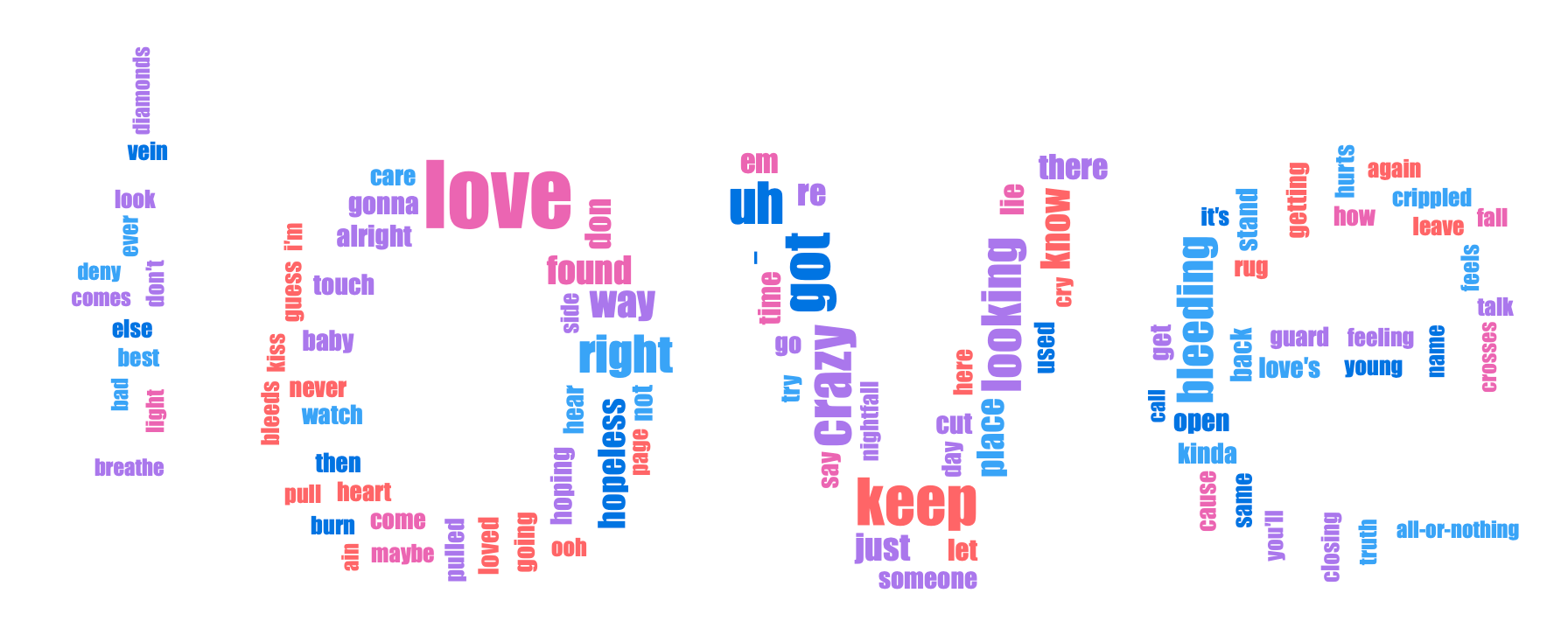
To avoid losing such a work of art, you should of course save it well by either inserting it into the QTT worksheet, copying the view to the clipboard and inserting it into an external document, or exporting it directly as a png graphic:
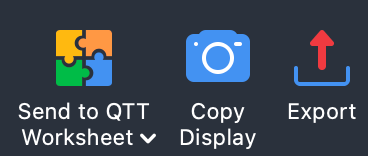
In this sense: All you need is love!
Conclusion
For a comprehensive analysis and accurate answering of the questions asked, more data, secondary literature, and contextual knowledge would be necessary in this example. Here, the focus is on demonstrating the possibilities and options of the Word Cloud function. The precise use then depends on the research question, topic, interest, discipline, etc. What hopefully has become clear: The Word Cloud is fun. It’s beautiful to look at, it’s practical, it’s supportive, it provides a basis for analysis, and you can build upon it. You can rely on it. The Word Cloud is always there when you need it, just a right-click away. If your own data ever seems overwhelming: The Word Cloud first sorts the most frequent words and presents them in their relevance. The Word Cloud is a beginning. Let us be carried by it, floating and reliably, to a broadened analytical horizon.
By the way: the greatest love song of all time (in the USA) is “Endless Love” by Diana Ross & Lionel Richie. The song topped the US Top 100 charts for nine weeks in 1981.
(1) 2011-2020 Sprichwörter und Redewendungen – Bedeutung und Herkunft von deutschen Sprichwörtern und Redewendungen. Auf Wolke 7 schweben » Sprichwörter & Redewendungen (Letzter Zugriff: 25.3.25).
About the author

Camilla works as a customer and community manager at Verbi, MAXQDA. She studied social and cultural anthropology and is passionate about qualitative data and ethnography.

